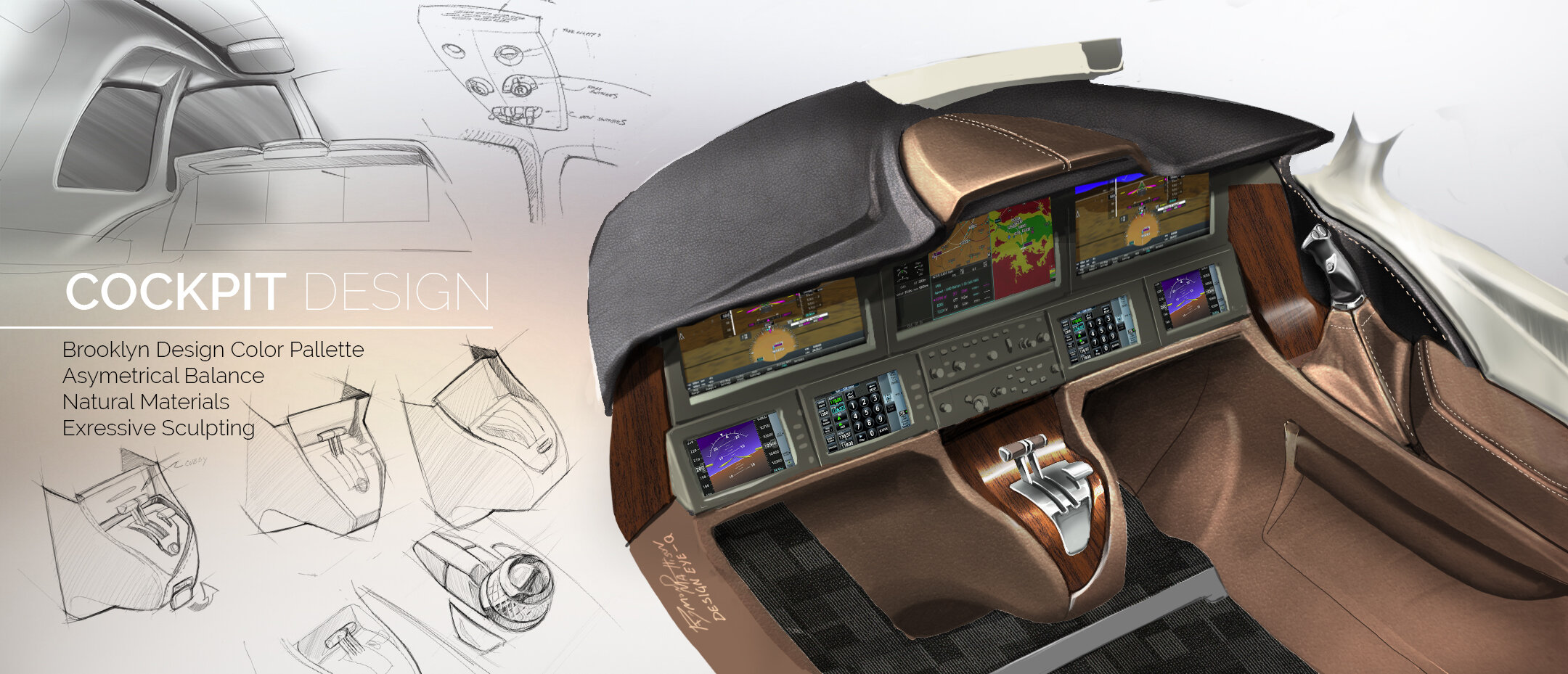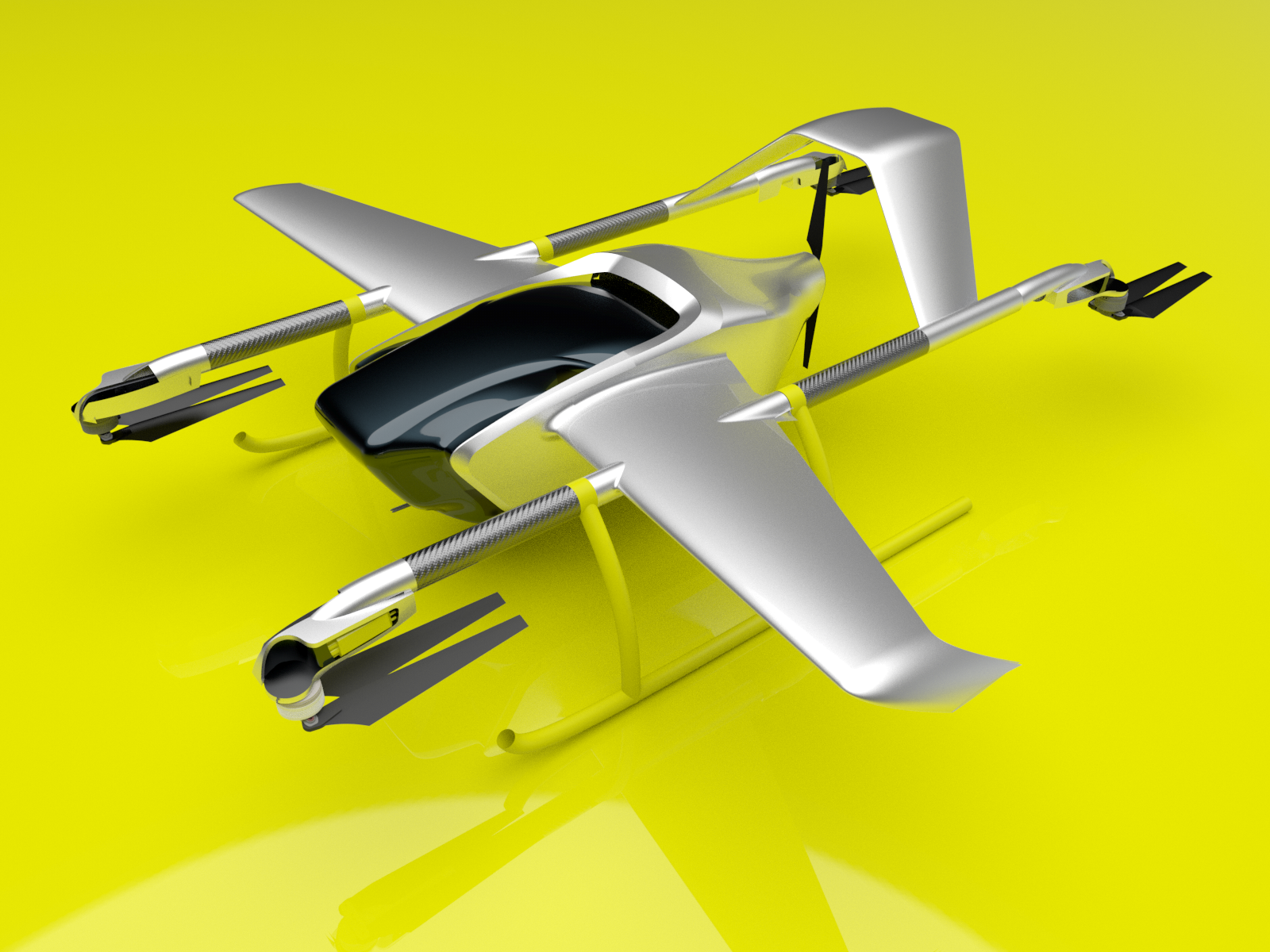5 Reasons the Future of Aviation Looks Brighter
5 Reasons the Future of Aviation Looks Brighter
Imagine an Olympic track, the runners intently poised on the starting line. The explosive energy, focus, and drive that will push them toward the finish line is just waiting to be released. All the striving, all the blood, sweat, and tears has brought the athletes to this tense and exciting moment -- the moment before the race begins.
That is exactly what it’s like working in aviation right now. There is so much new technology on the brink of a breakthrough, just waiting to take off. Here are the five front-runner innovations that our studio (and the rest of the aviation industry) are watching closely:
Electric Vertical Take-Off and Landing (EVTOL)
Dozens of companies are competing to enter the market in the urban mobility space
Perhaps you’ve heard the buzz around urban mobility, or “air taxis.” In theory, these electric aircraft could be used for autonomous, short-range commercial flights in high-density, high-traffic areas. As it turns out, this theory has proved possible.
EVTOL technology has gained a lot of traction over the last few years. The hype really began when Uber announced it wanted to invest resources into EVTOL tech through Uber Elevate (now in partnership with Joby Aviation) in the hopes that their enormous network of consumers would be among the first with access to “the future of urban mobility.” Now it seems as if every investment banker wants in on an EVTOL project. Other examples of EVTOL up-and-comers include Wisk (by Google), Lilium (based in Germany), and Bell helicopters.
There are still a few challenges for EVTOL developers to overcome, like the operating noise level and (most importantly) flight duration. The good news is, automotive companies are making such good batteries that EVTOL aircraft can fly for longer periods of time. It doesn’t look like the technology is quite there yet, but every year brings us closer to urban mobility. Our prediction: once they produce the right batteries, EVTOL tech will really take off.
Drones
More than a great Xmas gift for teens, drones are becoming industrious and essential
In ten years, it’s possible that drones will be delivering Amazon packages, Walmart groceries, and even takeout. Big Tech is pouring a lot of money into producing drones that perform as delivery vehicles, carrying packages the last mile or so to their destination. It seems a small distance, but flying a package that last mile means faster and more fuel-efficient delivery.
Imagine the possibilities: hospitals could deliver much-needed medical supplies to isolated communities; delivery companies with large carbon footprints could dramatically cut back on emissions; and of course, your dinner could get to you faster than ever.
Supersonic Technology
We return to Supersonic air travel
International travel via supersonic aircraft (or, aircraft that travels faster than the speed of sound) has been around since 1976, but there were very few advancements made over the last fifty years -- until recently.
Boom Technology, a private company specializing in supersonic flight, got an order for fifty supersonic jets from United Airlines. These jets are beautiful, luxurious, and fast. Private companies like Boom are also determined to solve the sonic boom problem. If these companies can discover a way to displace the shockwave, then consumers could fly on aircraft twice as fast as the fastest commercial jet. Imagine flying from San Francisco to Tokyo in six hours. Our small world just got even smaller.
Autonomous Aircraft
The new generation of aircraft will aviate navigate and communicate on their own
Commercial airliners have been semiautonomous for many years, but private planes are still reliant on pilots. As our computers continue to get smarter, autonomy will become common on a smaller scale soon enough. The ultimate goal of autonomous aircraft would be a grounded pilot. Why would this be an enormous gain? One word: predictability.
There is nothing Air Traffic Control (ATC) loves more than predictability. A fully autonomous aircraft can consider all of the flight variables simultaneously and without error, as well as constantly communicate with ATC their location, fuel levels, you name it. As private aircraft become more accessible to the general population, autonomy will keep people safe -- and keep the folks at ATC happy.
Skeptical? Check out this new innovation from Cirrus Aircraft. We are incredibly close to creating fully autonomous aircraft.
CIVILIAN SPACE TRAVEL
Civilian space flight is (in our opinion) the most compelling venture in aviation to date. Right now, the opportunity to enter space is limited to millionaires, but it may not be long until space tourism becomes more accessible.
As industrial designers, we are most interested in addressing the challenges of space flight from a passenger’s perspective. For example, after those few minutes of zero gravity, how do people get back to their seats? A zipline? Through industrial design, we can consider a number of possibilities.
Big players are investing billions and billions of dollars into these design challenges. Private companies like SpaceX, Virgin Galactic, and Blue Origin are reimagining what spaceflight could look like. As engineers, designers, and tech geeks, we are all on the edge of our seat, waiting to see what will happen and how we can take part.
Our studio designs for the future
At Design EyeQ, we want to help shape the future of aviation by working directly with innovative companies. Here are a few of our most recent aviation projects:
Aris: Aris is an EVTOL we designed. Our goal was to democratize short flights, making them accessible to everyone. As an EVTOL craft, Aris could takeoff and land vertically while flying short distances on a battery-powered engine. Unlike other EVTOL designs, Aris is handicap accessible and includes buffer restraints on the intake ramp. If Aris was built, it would be compliant with American With Disabilities (ADA) requirements.
Savion: Savion is a traditional business jet, but its alternative fuel source is a potential game-changer. It runs completely clean, powered by liquified natural gas rather than fossil fuels. If you take natural gas, make it really, really cold, and put it under high pressure, you have a clean fuel source that can power a jet engine.
If this fuel alternative takes off (metaphorically), it would be a huge victory for “green” flight. It’s even more environmentally friendly than electricity because manufacturing batteries produce a lot of waste.
Savion is also being designed to fly remotely. A single pilot would be able to control multiple aircraft from the ground, and the planes would still be able to fly long distances. This would also be a game-changer for the aviation industry, as the pilot is generally the most expensive part of flying.
ORKID: ORKID is a drone our studio has designed and 3D printed. It is being built to deliver medical supplies to remote locations in South America. ORKID is a quad wing drone with four upward-facing rotors. It can take off anywhere, land anywhere flies autonomously, and is app-enabled. We recently traveled to Colombia to help with the flight demonstrator aircraft, and we’re excited about the progress it’s made.
Interested in working with our studio?
Want to collaborate on aviation innovations? Contact us to get started.








